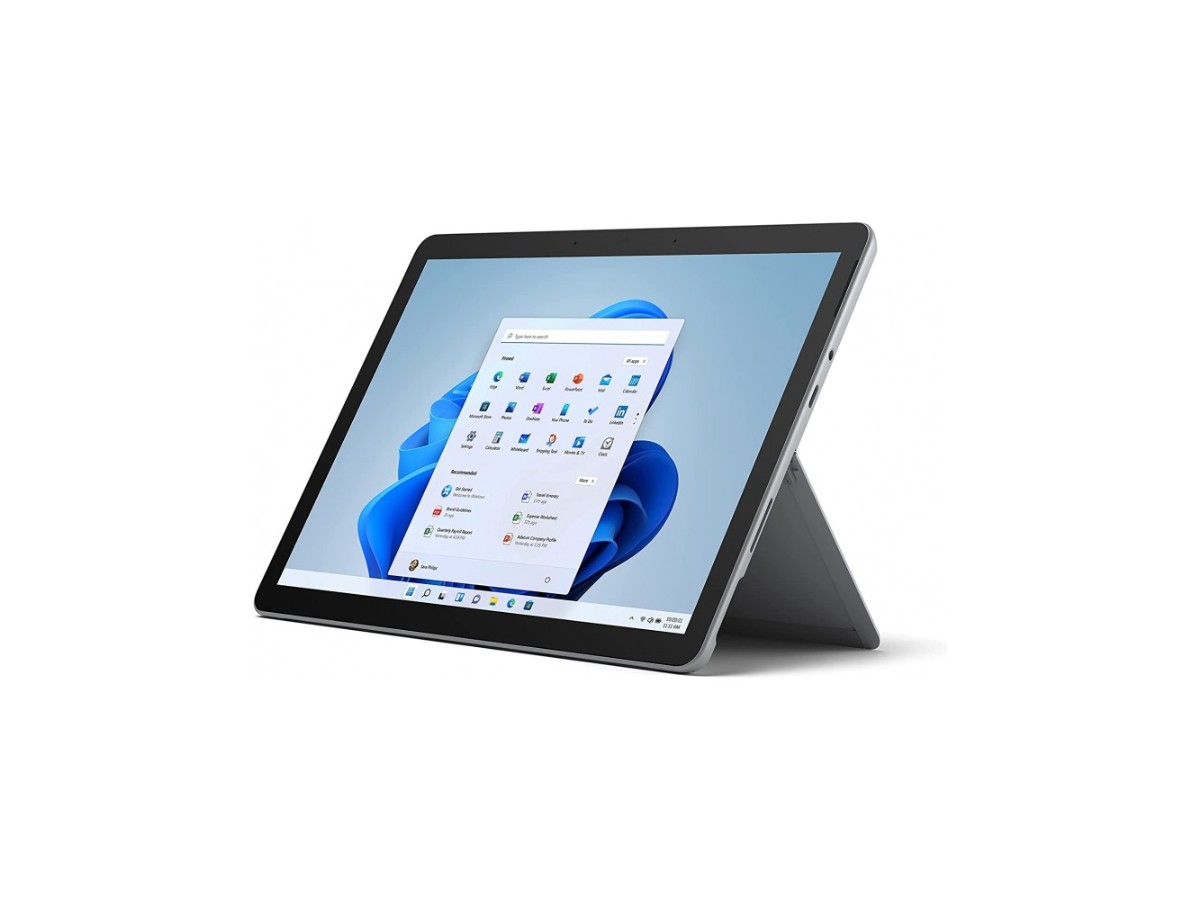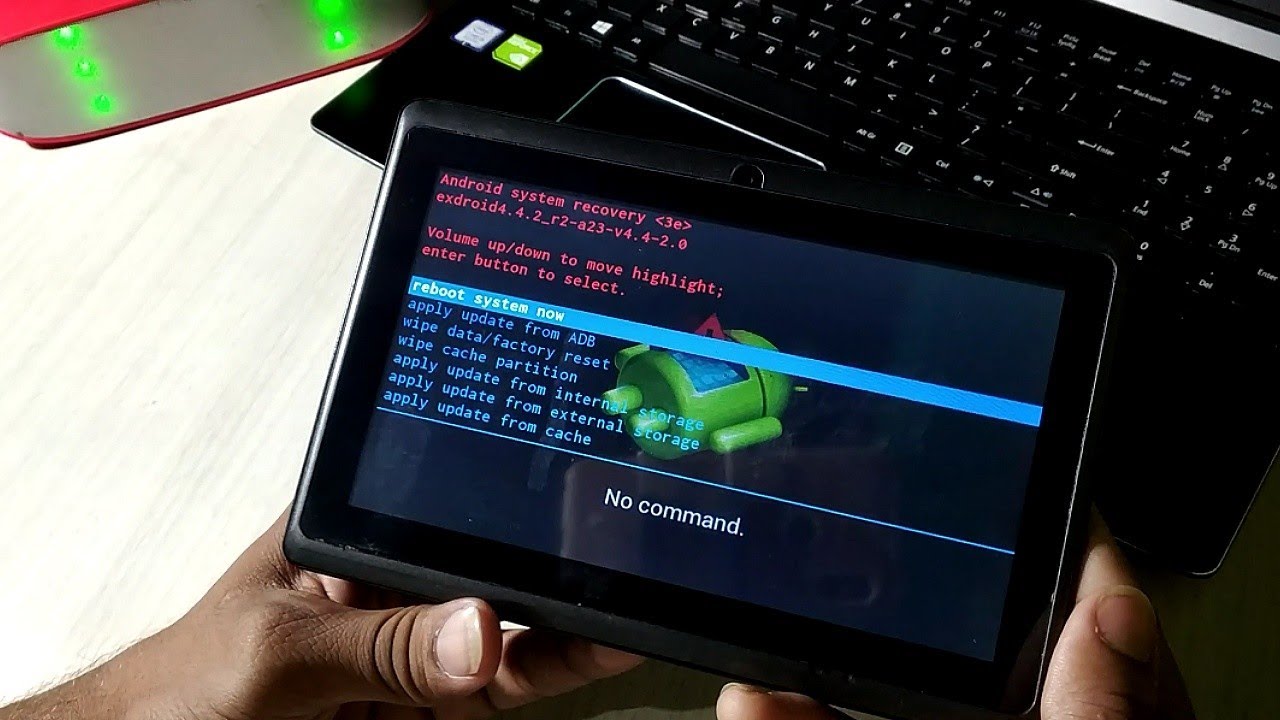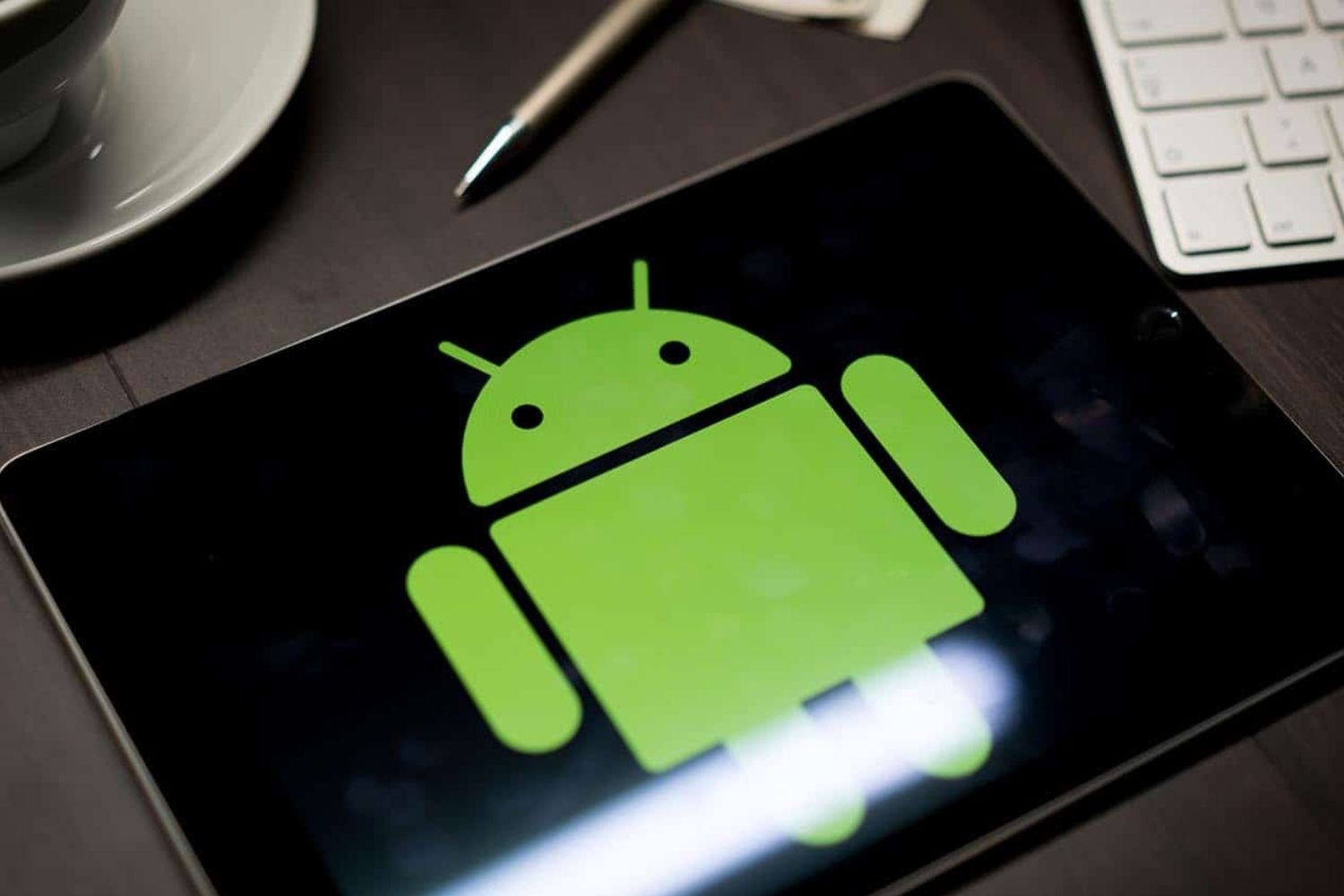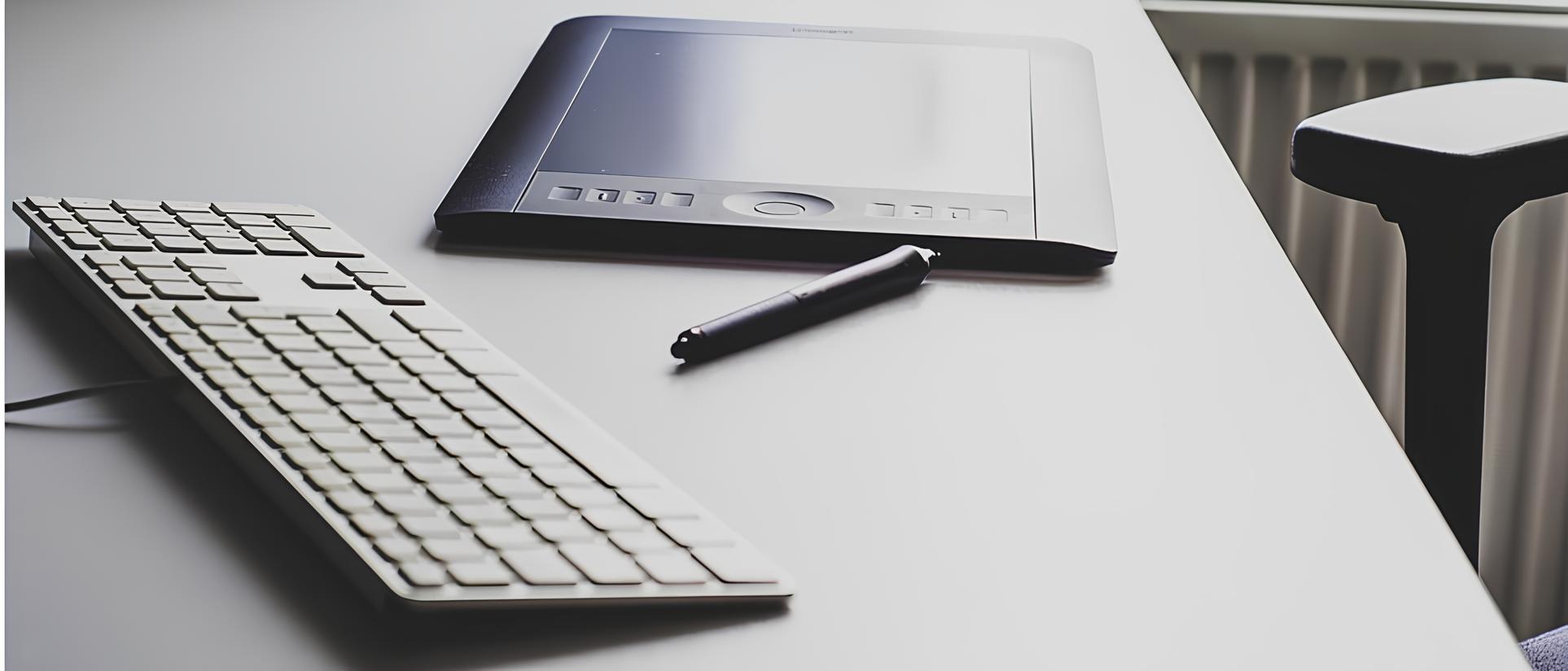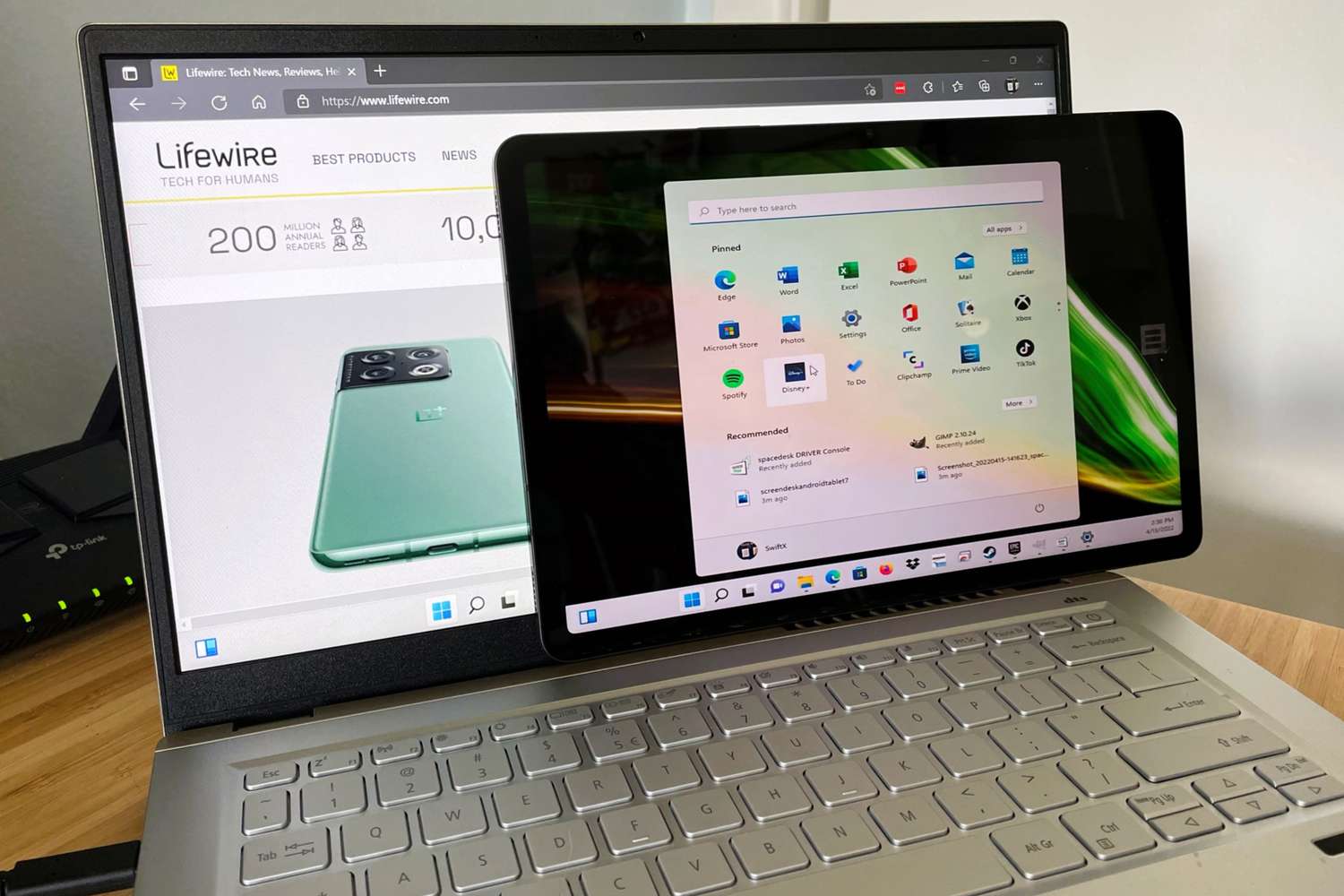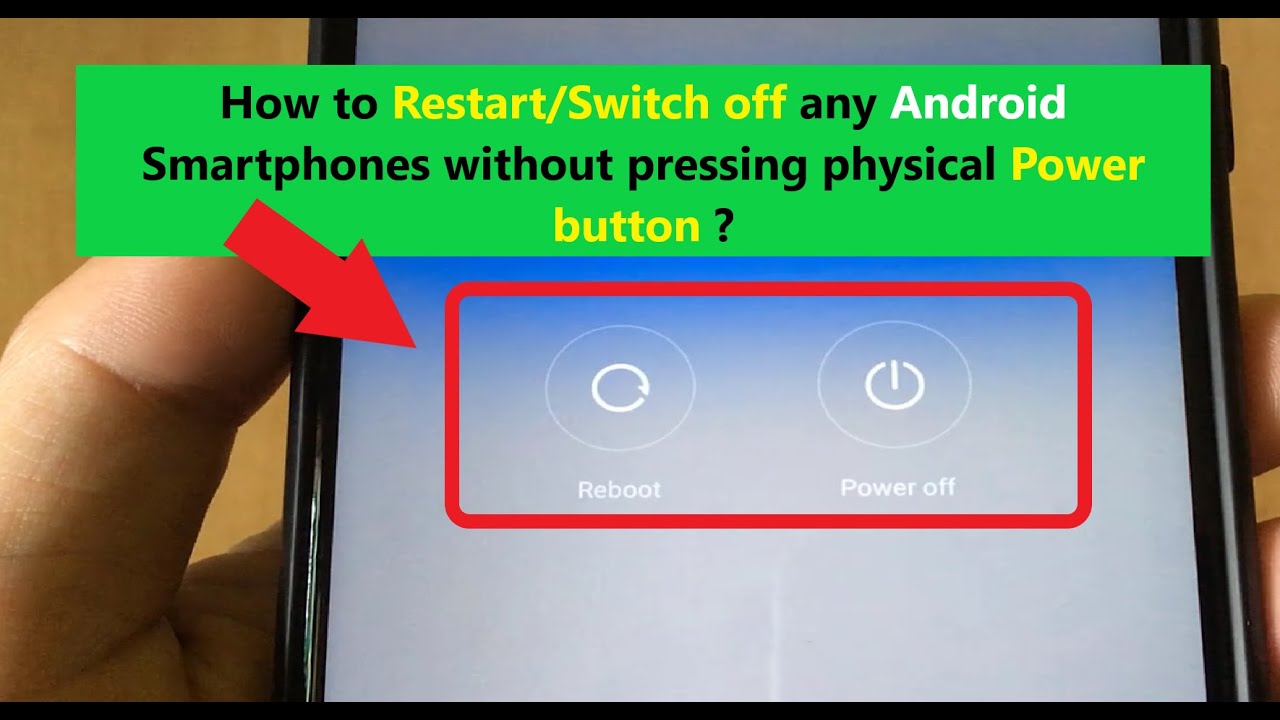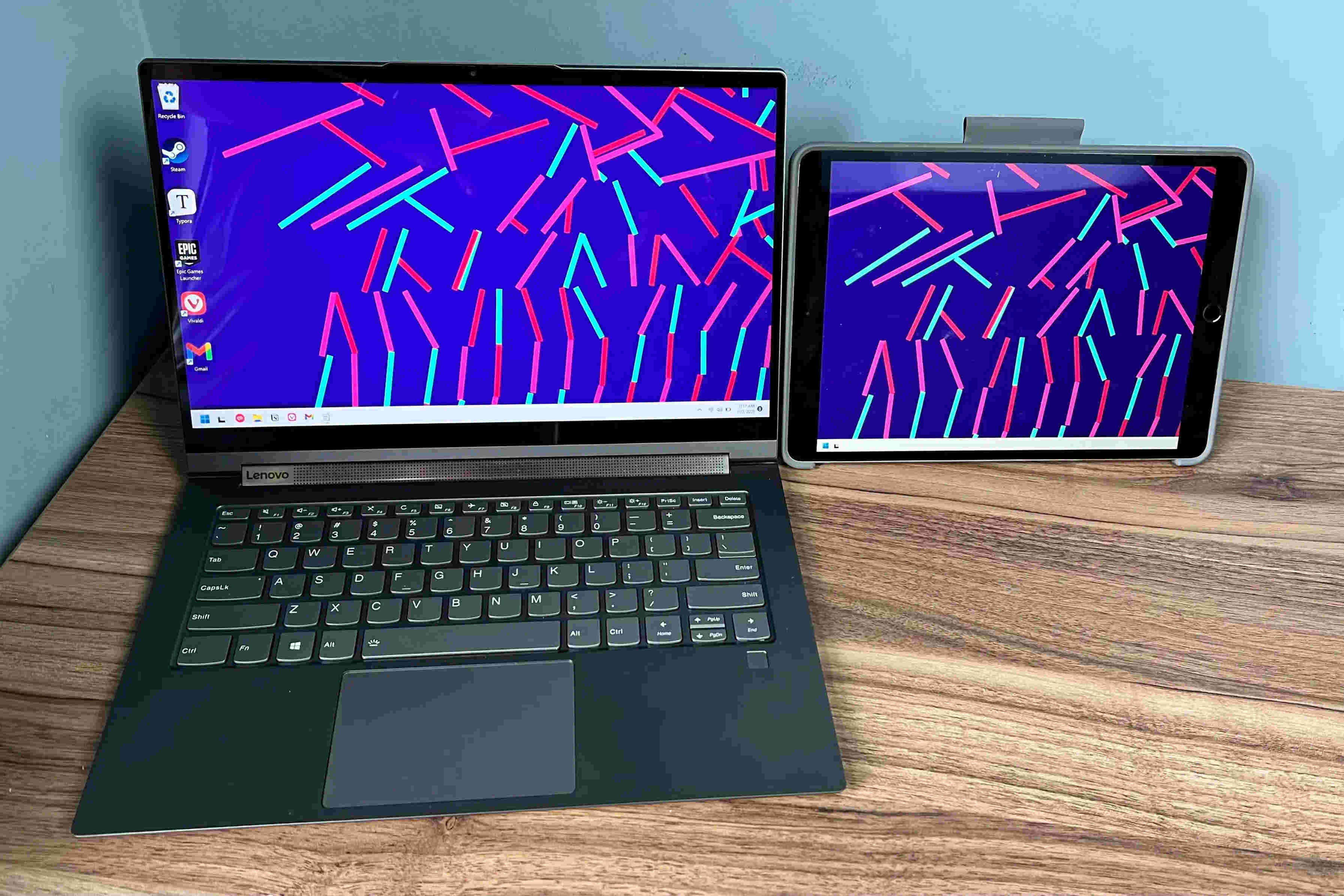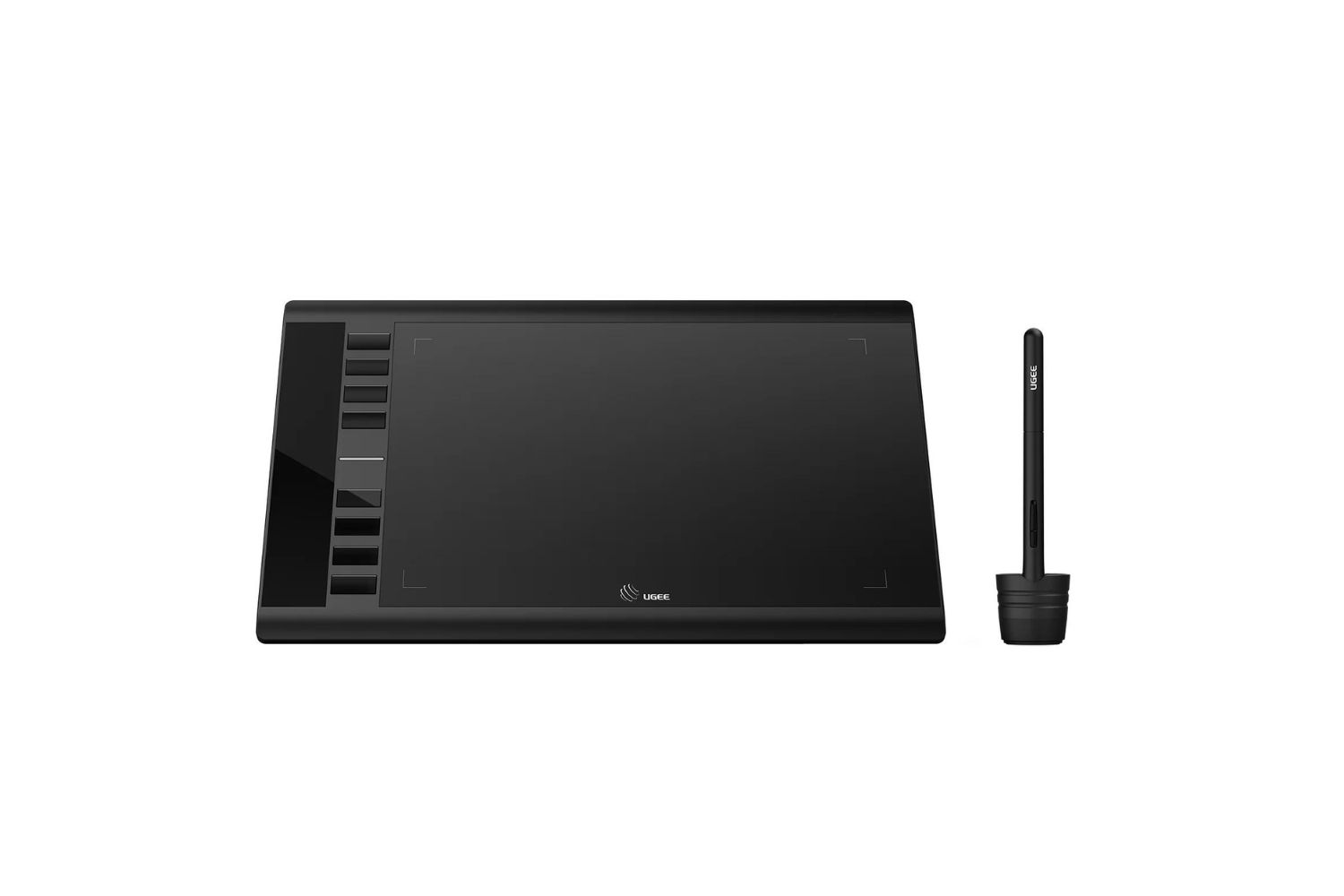Introduction
A tablet computer, also known simply as a tablet, is a portable device that has gained tremendous popularity in recent years. Combining the functionality of a smartphone with the convenience of a laptop, tablets have become an essential tool for both personal and professional use. With their sleek and lightweight design, tablets offer a versatile platform for various activities, including browsing the internet, watching videos, playing games, and even completing work tasks on the go.
The concept of a tablet computer originated several decades ago, but it was not until the introduction of the Apple iPad in 2010 that the tablet market truly took off. Since then, numerous manufacturers have released their own versions of tablets, making them accessible to a wide range of consumers. Tablets have evolved to incorporate advanced features such as powerful processors, high-resolution displays, and intuitive touchscreens, which have further contributed to their widespread adoption.
Tablets are distinguished by their unique form factor, which typically consists of a flat screen display that is operated by touch input. Unlike traditional laptops, tablets lack a physical keyboard, relying on either an on-screen virtual keyboard or external accessories for text input. This design element, coupled with their portability, has made tablets a popular choice for individuals who require a more streamlined and compact computing experience.
Furthermore, tablets offer a range of features that make them versatile for both entertainment and productivity purposes. With access to app stores, users can download and install applications tailored to their specific needs, whether it be for gaming, photo editing, document viewing, or social networking. This extensive library of apps ensures that tablets can adapt to the user’s preferences and requirements.
In the following sections, we will delve into the history, definition, types, operating systems, uses, advantages, and disadvantages of tablet computers. Additionally, we will discuss how to choose the right tablet computer that suits your individual needs and preferences. By exploring these aspects, you will gain a comprehensive understanding of the world of tablets and be better equipped to make informed decisions when it comes to selecting a tablet for your personal or professional use.
History of Tablets
The concept of tablet computers can be traced back to the 1960s when Alan Kay, a computer scientist, envisioned a portable device known as the Dynabook. However, it wasn’t until the early 2000s that tablets started to make their way into the mainstream market.
In 2001, Microsoft introduced the Tablet PC, which was a version of their Windows operating system specifically designed for tablet use. Despite its innovative features, such as handwriting recognition and digital ink support, the Tablet PC failed to gain widespread popularity due to its hefty price tag and limited software compatibility.
It wasn’t until 2010 that tablets truly took off with the release of the Apple iPad. The iPad revolutionized the market with its sleek design, intuitive user interface, and extensive app ecosystem. Its success paved the way for other manufacturers, such as Samsung, Google, and Amazon, to enter the tablet market with their own offerings.
The rapid advancements in technology have played a significant role in shaping the evolution of tablets. From the early models that had basic functionalities to the current generation tablets that boast powerful processors, high-resolution displays, and advanced features such as fingerprint sensors and facial recognition, tablets have become more versatile and capable than ever before.
Today, tablets have found their place in various industries and sectors, such as education, healthcare, business, and entertainment. They are used in classrooms to enhance the learning experience through interactive educational apps and digital textbooks. In healthcare, tablets are utilized for medical record keeping, patient monitoring, and telemedicine consultations. In the business world, tablets are increasingly replacing traditional laptops as a portable and convenient option for professionals on the go.
The demand for tablets continues to grow as manufacturers introduce new models with improved performance and features. Whether it’s for personal entertainment, professional productivity, or educational purposes, tablets have become an integral part of our modern digital lives.
In the next section, we will explore the definition and features of tablet computers to gain a better understanding of what sets them apart from other devices.
Definition and Features of Tablet Computers
A tablet computer is a portable device that features a flat touch-sensitive screen and does not have a physical keyboard. It combines the functionality of a smartphone with the larger display and more powerful capabilities of a laptop. Tablets allow users to perform various tasks, such as browsing the internet, watching videos, playing games, and accessing a wide range of applications.
One of the key features of a tablet computer is its touch-sensitive screen, which enables users to interact with the device by tapping, swiping, and pinching their fingers to navigate and perform actions. This intuitive touch interface has become a defining characteristic of tablets, providing a more intuitive and interactive user experience compared to traditional computers.
In addition to their touch screens, most tablets also offer a virtual keyboard for text input. This on-screen keyboard is adaptable and can be resized or repositioned to suit the user’s preference. For more extensive typing needs, users can connect external keyboards via Bluetooth or USB.
Tablets are lightweight and highly portable, making them ideal for on-the-go use. They are usually designed with a slim profile and a sleek, minimalist aesthetic. Many tablets incorporate features such as front and rear-facing cameras for capturing photos and videos, built-in speakers for multimedia playback, and various connectivity options such as Wi-Fi and Bluetooth.
Another significant feature of tablets is their operating system, which is responsible for managing the device’s resources and running applications. The two most widely used operating systems for tablets are iOS, developed by Apple for their iPads, and Android, developed by Google and utilized by various tablet manufacturers. Both operating systems offer access to app stores, where users can download a vast array of applications ranging from productivity tools to entertainment and gaming apps.
Tablets also come with different storage capacities, which determine the amount of data, such as apps, documents, photos, and videos, that can be stored on the device. Some tablets offer expandable storage options through the use of memory cards, while others have fixed internal storage.
Furthermore, tablets may have additional features such as fingerprint sensors or facial recognition for enhanced security, GPS for navigation purposes, and support for stylus input to enhance productivity and creative tasks.
In the next section, we will explore the different types of tablet computers that are available in the market today.
Types of Tablet Computers
Tablet computers come in various types and sizes to cater to different user preferences and needs. Understanding the different types can help you choose the tablet that best suits your requirements.
1. Standard Tablets: These tablets, often referred to as full-size tablets, are the most common type available. They typically have screen sizes ranging from 9 to 12 inches diagonally, providing a large display for multimedia consumption and productivity tasks. Standard tablets offer a balance between portability and functionality, making them suitable for a wide range of users.
2. Mini Tablets: As the name suggests, mini tablets are smaller and more compact than standard tablets. They usually feature screen sizes between 7 and 8 inches, offering a more portable form factor. Mini tablets are ideal for users who prioritize portability and require a device that can easily fit into a bag or pocket.
3. Convertible or 2-in-1 Tablets: These tablets provide the versatility of a tablet combined with the functionality of a laptop. Convertible tablets feature detachable or foldable keyboards that can be used when a physical keyboard is desired, transforming the device into a laptop-like experience. This type of tablet is popular among users who require both touch-based interaction and traditional keyboard input.
4. Enterprise Tablets: Enterprise tablets are specifically designed for business and professional use. They often come with additional security features, such as encrypted storage and biometric authentication, to protect sensitive data. Enterprise tablets are also equipped with productivity tools and applications for streamlined workflows and enhanced collaboration.
5. Kids’ Tablets: Designed with child-friendly features and parental controls, kids’ tablets provide a safe and engaging environment for young users. These tablets often include educational content, age-appropriate apps, and robust parental control settings to ensure a suitable digital experience for children.
6. Rugged Tablets: Rugged tablets are built to withstand harsh environments, making them suitable for use in industries such as construction, manufacturing, and field service. These tablets are designed to be water-resistant, dust-resistant, and impact-resistant, ensuring durability in demanding conditions.
7. E-reader Tablets: E-reader tablets are optimized for reading digital books, magazines, and newspapers. They typically feature high-resolution displays that mimic the look and feel of traditional paper. E-reader tablets offer a lightweight and portable reading experience, often with long battery life.
When choosing a tablet, consider factors such as screen size, processing power, storage capacity, operating system, and intended usage. Understanding the different types of tablets will help you make an informed decision based on your specific needs and preferences.
Next, we will explore the operating systems commonly used in tablet computers.
Operating Systems for Tablets
Tablet computers utilize various operating systems that dictate their user interface, functionality, and compatibility with apps and software. The choice of operating system plays a crucial role in determining the overall user experience and available features on a tablet. Let’s explore the most popular operating systems for tablets:
1. iOS: Developed by Apple, iOS is the operating system exclusively used in their iPad lineup. iOS offers a seamless and intuitive user interface with a focus on simplicity and ease of use. The App Store for iOS provides a vast selection of apps specifically optimized for iPad, including productivity tools, creative apps, and games. Additionally, iOS ensures a high level of security and regular software updates for a stable and secure experience.
2. Android: Developed by Google, Android is an open-source operating system used by numerous tablet manufacturers. Android offers a highly customizable interface and a wide range of apps available for download from the Google Play Store. Android tablets provide flexibility, allowing users to personalize their devices and access a variety of productivity tools, entertainment apps, and games.
3. Windows: Windows tablets use the Windows operating system, providing a familiar desktop-like experience. Windows tablets offer compatibility with a wide range of software and applications, making them a popular choice for professionals who require access to industry-specific software. With the Windows Store, users can download apps specifically designed for Windows tablets.
4. Amazon Fire OS: Amazon’s Fire OS is a customized version of Android, designed specifically for use on Amazon devices such as Fire tablets. Fire OS offers a streamlined interface and seamless integration with Amazon’s vast ecosystem, including access to Amazon’s digital content, such as books, movies, and apps, through the Amazon Appstore.
Each operating system comes with its own set of unique features, advantages, and limitations. When selecting a tablet, consider the compatibility with your existing devices and software, as well as the availability and quality of apps in the respective app stores. It’s also important to consider the user interface and personal preferences when choosing an operating system for your tablet.
In the next section, we will explore the various uses of tablet computers in today’s digital era.
Uses of Tablet Computers
Tablet computers have become incredibly versatile devices that find application in various aspects of our daily lives. Their portability, intuitive touch interface, and vast app ecosystem make them suitable for a wide range of uses. Let’s explore the different ways tablet computers are commonly used:
1. Web Browsing and Social Media: Tablets provide a convenient platform for browsing the internet, accessing social media networks, and staying connected with friends and family. With their large touch screens, users can easily navigate websites, watch videos, and engage in social networking activities.
2. Entertainment and Multimedia: Tablets are perfect for consuming various forms of entertainment. Users can watch movies and TV shows, listen to music, and view photos on their tablets. Additionally, tablets offer a great gaming experience, with a wide selection of gaming apps available for download.
3. Productivity and Work: Tablets have become essential tools for productivity, allowing users to work on documents, presentations, and emails on the go. With the availability of productivity apps and cloud storage services, tablets enable seamless collaboration and remote working.
4. Education and E-learning: Tablets are increasingly being used in educational settings. They offer interactive learning experiences through educational apps, digital textbooks, and multimedia resources. Tablets can enhance engagement and provide personalized learning opportunities for students of all ages.
5. Creative and Artistic Pursuits: Tablets provide a platform for creative expression and artistic endeavors. With drawing and design apps, users can sketch, paint, and create digital artwork. Tablets with stylus support offer precision and control for artists and designers.
6. Travel and Navigation: Tablets are great companions for travelers. They can be used for planning trips, booking accommodations, and finding directions. Navigation apps make it easy to find routes and explore new places.
7. Healthcare and Medical Applications: Tablets play a significant role in healthcare, facilitating tasks such as electronic patient records, medical imaging, and telemedicine consultations. They provide a portable and convenient platform for healthcare professionals to access critical information.
8. Childhood Development: Tablets designed for children offer educational content, interactive games, and age-appropriate apps that support the development of cognitive and motor skills in young learners.
These are just a few examples of the diverse uses of tablet computers. The versatility and portable nature of tablets make them indispensable devices in our digital era, enabling us to connect, learn, work, and enjoy entertainment on the go.
In the next section, we will explore the advantages and disadvantages of using tablet computers.
Advantages and Disadvantages of Tablet Computers
Tablet computers offer numerous advantages that have contributed to their widespread popularity. However, like any technology, they also have their disadvantages. Let’s take a closer look at the advantages and disadvantages of using tablet computers:
Advantages:
1. Portability: Tablets are lightweight and compact, making them highly portable. They can be easily carried in a bag or backpack, allowing users to stay connected and productive on the go.
2. Intuitive Touch Interface: Tablets feature touch screens that offer a user-friendly and intuitive interface. Interacting with the device is natural and requires minimal learning curve, making it accessible to users of all ages.
3. App Ecosystem: Tablets provide access to extensive app stores, offering a wide range of applications for various purposes. Users can choose from productivity apps, games, educational resources, entertainment platforms, and more.
4. High-Quality Displays: Tablets typically feature high-resolution displays that offer crisp and vibrant visuals. This makes them ideal for multimedia consumption, such as watching movies, browsing photos, and playing games.
5. Long Battery Life: Tablets often have excellent battery life, allowing for prolonged use without frequent recharging. This makes them reliable devices, particularly when used for extended periods away from power outlets.
6. Versatility: Tablets can be used for a wide range of activities, including web browsing, social media, productivity tasks, entertainment, and even creative pursuits. Their versatility makes them suitable for individuals with different needs and preferences.
Disadvantages:
1. Limited Processing Power: While tablets have become more powerful over the years, they generally have less processing power compared to traditional computers. This may limit their ability to handle resource-intensive tasks or run complex software.
2. Lack of Physical Keyboard: Tablets rely on virtual keyboards or external accessories for text input, which may not be as comfortable or efficient as a physical keyboard for extensive typing tasks.
3. Storage Limitations: Tablets often have limited storage capacities, particularly compared to laptops or desktops. This may require users to rely on cloud storage or external storage solutions for storing large files or media collections.
4. Software Compatibility: Not all software and programs are available or optimized for tablet platforms, depending on the operating system. Users may encounter limitations in finding suitable applications for their specific needs.
5. Reduced Multitasking: Tablets may not offer the same level of multitasking capabilities as traditional computers. Running multiple apps simultaneously or performing complex multitasking operations may be more limited on tablets.
6. Hardware Limitations: Compared to laptops or desktops, tablets may have hardware limitations, such as limited RAM or graphics capabilities. This may impact their performance when running demanding applications or multitasking.
Understanding the advantages and disadvantages of tablet computers can help individuals make informed decisions based on their specific needs and expectations. Despite their limitations, tablets remain valuable and versatile devices for a wide range of users.
In the next section, we will explore the factors to consider when choosing a tablet computer.
How to Choose a Tablet Computer
Choosing the right tablet computer can be overwhelming with the plethora of options available in the market. Consider the following factors to help you make an informed decision and find a tablet that meets your specific needs:
1. Operating System: Determine which operating system aligns with your preferences and requirements. iOS, Android, Windows, and Amazon Fire OS each have their own unique features, app ecosystems, and user interfaces.
2. Screen Size and Resolution: Consider the display size and resolution based on your intended use. A larger screen is more suitable for multimedia consumption and productivity tasks, while a smaller screen offers enhanced portability.
3. Performance: Look for a tablet with a powerful processor, ample RAM, and sufficient storage capacity to ensure smooth multitasking and efficient performance. Consider your typical usage needs to determine the appropriate specifications.
4. Battery Life: Evaluate the battery life as it impacts the usability of the tablet. Longer battery life is beneficial, especially for users who require extended periods of usage without frequent recharging.
5. Connectivity: Consider the connectivity options such as Wi-Fi, Bluetooth, and cellular connectivity. Ensure the tablet has the necessary connectivity features to suit your needs, whether it’s for browsing, streaming, or staying connected on the go.
6. Camera Quality: If you plan on using the tablet for photography or video calling, prioritize a tablet with high-quality cameras, both front and back.
7. Storage: Decide on the required storage capacity based on your usage preferences. Tablets often offer different storage options, and some may allow for expandable storage through memory cards.
8. Design and Build: Consider the overall design, build quality, and ergonomics of the tablet. Look for a device that feels comfortable to hold and has a design that suits your aesthetic preferences.
9. Price: Set a budget range and consider the features and specifications that align with it. Compare the prices of different tablets while assessing their value for the price.
10. Reviews and Recommendations: Read reviews and seek recommendations from trusted sources to gain insights into the performance and reliability of the tablet you are considering. Customer reviews can offer valuable feedback and help you make an informed decision.
By considering these factors, you can narrow down your options and find a tablet that best suits your needs, preferences, and budget. Remember to prioritize the features that are most important for your intended use to ensure a satisfying tablet experience.
As we conclude this article, we hope that the information provided has helped you gain a comprehensive understanding of tablet computers and their various aspects. Whether you’re a student, professional, or someone simply looking for a versatile device for entertainment and productivity, tablets have become an integral part of our modern lives, offering convenience, portability, and endless possibilities.
Conclusion
Tablet computers have become increasingly popular in recent years due to their portability, versatility, and intuitive touch interface. They have revolutionized the way we consume media, work, learn, and stay connected. With their sleek designs, powerful capabilities, and extensive app ecosystems, tablets offer a convenient and engaging user experience.
Throughout this article, we have explored the history of tablets, their definition and features, various types available, popular operating systems, common uses, as well as advantages and disadvantages. We have also provided guidance on how to choose the right tablet for your needs.
Tablets have transformed various industries, including education, healthcare, business, and entertainment. They have become essential tools for students, professionals, travelers, and individuals seeking a versatile device for entertainment and productivity on the go. From browsing the web to watching movies, from creating digital art to collaborating on documents, tablets provide a platform that meets a wide range of needs.
Despite their advantages, tablets also come with their limitations. Factors such as limited processing power, lack of a physical keyboard, and software compatibility issues should be considered when selecting a tablet.
In conclusion, tablet computers have become integral parts of our digital lives. They offer convenience, flexibility, and accessibility through their portability, touch screen interfaces, and extensive app stores. By understanding their features, types, and usage scenarios, individuals can make informed decisions when choosing a tablet that best meets their needs and preferences. Whether it’s for work, education, entertainment, or creativity, tablets continue to shape the way we interact with technology and navigate the digital world.







